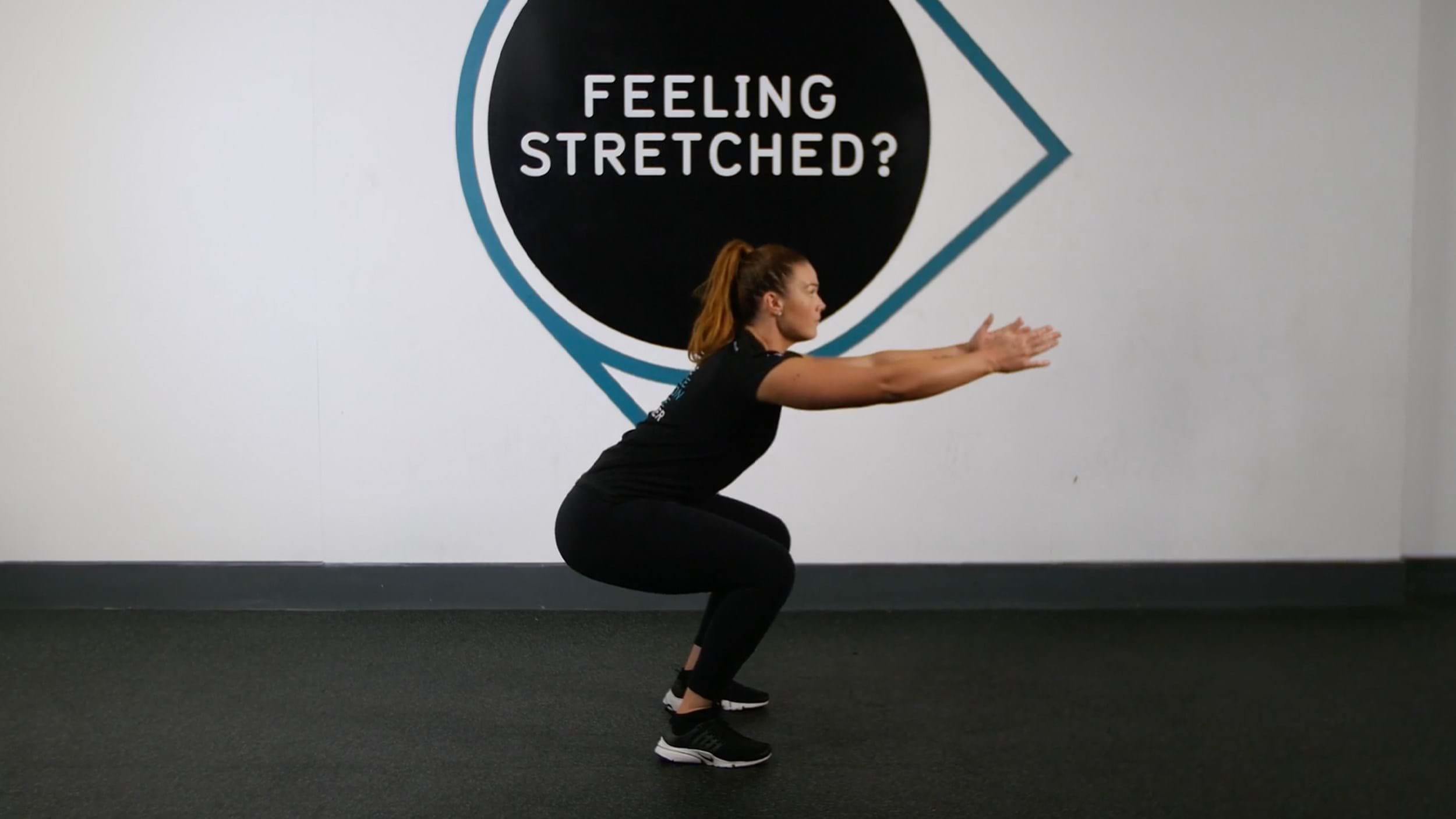Bodyweight Squats
What Is A Bodyweight Squat?

The bodyweight squat is a great place to start if you're new to resistance training or practicing squats. With no load, there's minimal risk of injury and it's the best way to start understanding and mastering the movement pattern of a squat before moving on to weighted squats. Once you are confident with the movement pattern and form, you can progress by adding dumbbells or kettlebells.
Bodyweight squats are also a great option for anyone training with minimal equipment. It can be performed anywhere, making it suitable for home and gym workouts, and can be made harder by adjusting the speed, tempo, and depth.
Check out some other squat variations: barbell back squats, front squats, sumo squats, goblet squats, split squats,
Commonly Asked Questions On Bodyweight Squats
If you’re new to resistance training, bodyweight squats can certainly help to build muscle. For those who have been squatting for some time or are used to squatting with load, it’s unlikely you’ll see muscle gain from implementing bodyweight squats into your routine. However, you could still benefit from implementing bodyweight squats as a superset, a workout finisher, or in a HIIT workout.
If you’ve been practising bodyweight squats for some time and are looking to progress the exercise without adding weights, try pausing for three seconds at the bottom of the movement to increase time under tension.
You can also add 1 and ¼ reps into your sets by squatting down all the way before pushing back up ¼ of the way, and back down again. Finish the rep by pushing back up to the starting position – this is 1 rep.
Bodyweight squats target the muscles of the lower body, including the glutes, hamstrings, quads, and calves. The erector spinae and core muscles also work to ensure stability throughout the exercise.
Bodyweight Squat Tips
Performing a bodyweight squat can be challenging, especially if you’re new to this movement. Choose a stance width that feels comfortable for you before you commence your squats. It’s important to keep both feet planted flat on the floor, and your spine neutral to target the correct muscles and reduce injury risks.
Make sure to keep the movement deliberate and controlled – focus on using the legs to drive the exercise rather than relying on gravity.
How To Do Bodyweight Squats
Adopt your squat stance by finding a foot positioning that feels comfortable for you. Some people find a wider stance (around shoulder width) works better for their anatomy, while others prefer a narrower stance (around hip width). Try a few stances to work out which feels best. Once you’ve found the position that is most comfortable, externally rotate your feet so that your toes are slightly pointing outwards.
Begin by pushing your hips back while bending at the knee, as if you were about to sit down. As you lower down, push your knees out to prevent them from caving inwards.
You can hold your arms by your sides, in front of your chest, or extended out in front of you for balance.
Squat down until your thighs are at least parallel with the floor, or below if you can.
Return to standing by pushing the ground away through your feet, making sure to push through both the whole foot and not just the heels.
Keep a soft bend in your knee to avoid locking out your legs as you stand tall. Slightly squeeze the glutes but avoid pushing your hips too far forward as this can place pressure on the lower back.
If you’re not sure if any of the above exercises are suitable for you, please consult your doctor before you start it. Need guidance on how to perform the exercise? Ask a personal trainer at your gym.